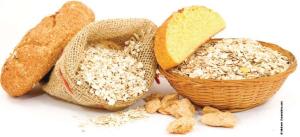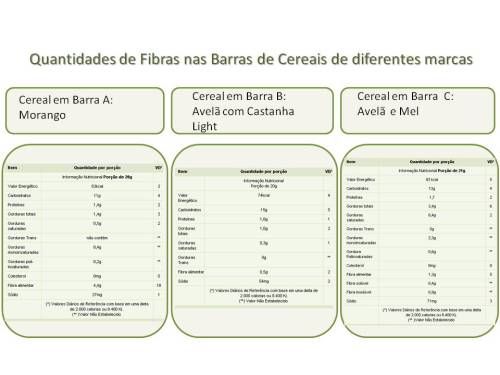The benefits of a balanced diet for maintaining health have been of increasing interest among the population, health professionals and scientists.
Dietary fibers have been highlighted due to studies that demonstrate beneficial effects when consumed appropriately, including improving intestinal functions, protecting against cardiovascular diseases and reducing the risk of certain types of cancer. Even though they do not provide nutrients for the body, they are essential in the diet.
According to the National Health Surveillance Agency (ANVISA): “Dietary fiber is any edible material that is not “broken down” by enzymes in the human digestive tract”.
Fibers are part of the category of functional foods, since ANVISA (1999) presents the following claim for fibers: “Dietary fibers help in the functioning of the intestine, their consumption must be associated with a balanced diet and healthy lifestyle habits” .
The recommended daily intake (IDR) for dietary fiber is 25 g, considering a diet of 2000 kcal (ANVISA, 2003).
Regarding fiber content, according to ANVISA Ordinance 27/98, for a food to be considered a source of dietary fiber it must contain at least 3 g of fiber per 100 g of product or 1.5 g per 100 mL, while that to have a claim of high dietary fiber content, the food must contain at least 6 g of fiber / 100 g or 3 g of fiber / 100 mL.
A diet low in fiber can lead to the development of constipation, diverticulosis, arteriosclerosis and an increased risk of tumors. Even so, fiber must be consumed within the limits established as healthy, and in excess, it can have negative consequences. In case of excess, there is a risk of greatly reducing the absorption of iron, zinc and other important minerals, and may even cause colitis.
There are several ways to get a greater amount of fiber in your diet:
· Consume several servings of fruit a day. Give preference to whole fruit instead of juice. To obtain a greater amount of fiber, eat with the skin and pomace, if possible;
· Increase consumption of cereals and legumes. Select whole grains or products based on them, rather than refined grains. To obtain a greater amount of fiber, add wheat, oat and rice bran when preparing cakes, soups and smoothies;
· Increase consumption of vegetables. One tip is to add bran from stems and leaves when preparing soups, stews, dumplings, etc.;
· In children's snacks, replace sweets and fried foods with fresh fruit;
· When eating in restaurants, include vegetables and salads and eat fruit as a dessert.
Reference
Health Surveillance Agency (ANVISA).
Hurtado DC, Calliari CM. Dietary fibers in the control of obesity.
Mattos LL. Consumption of dietary fiber in the adult population of the metropolitan region of São Paulo. São Paulo: Faculty of Pharmaceutical Sciences/Faculty of Economics and Administration and Faculty of Public Health at USP; 1997.
Dossier: Food Fibers. Revista-fi Food ingredients Brasil Nº 3 – 2008. São Paulo.


